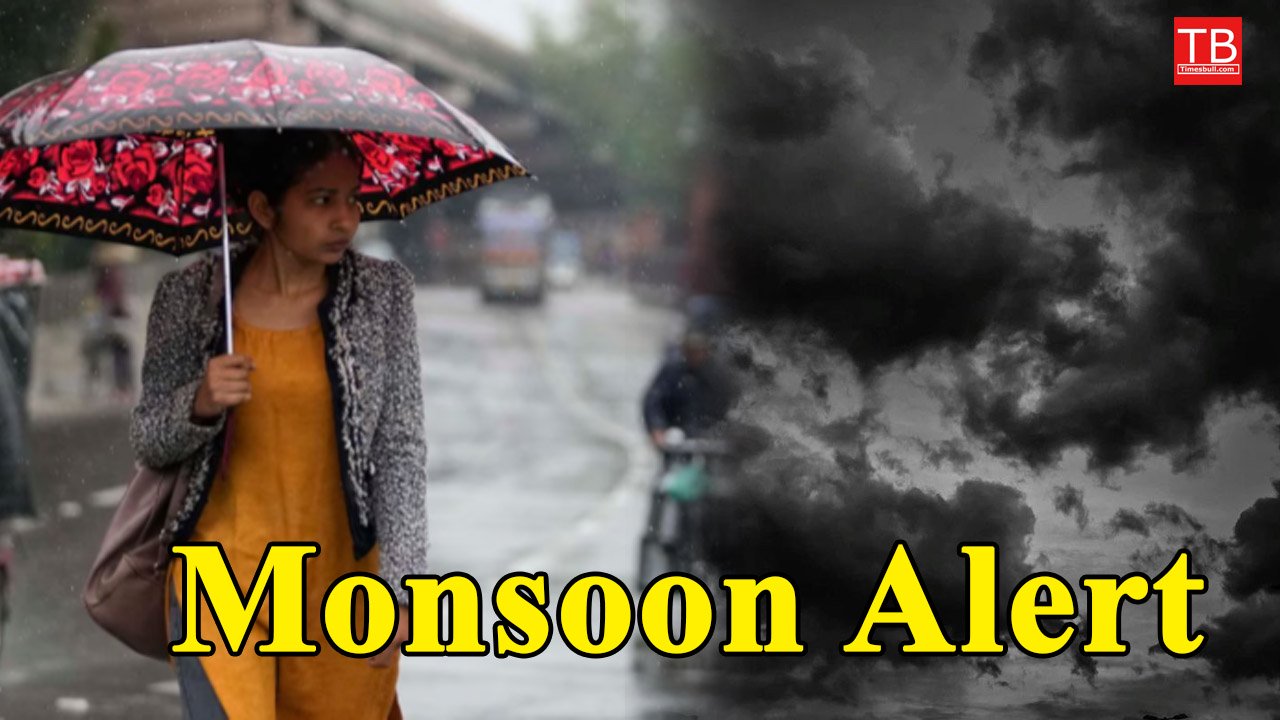New Delhi – The Southwest Monsoon, advancing rapidly across the country, is expected to reach Delhi today, June 24—marking its earliest arrival in the capital since 2013. After soaking large parts of northern India, including Himachal Pradesh, Uttarakhand, and western Uttar Pradesh, the monsoon touched down in Punjab a full 10 days ahead of schedule, making its presence felt in Jammu & Kashmir and Ladakh as well.
The India Meteorological Department (IMD) has issued forecasts of heavy to very heavy rainfall for several regions, including northwest India, Madhya Pradesh, Konkan, Goa, and Gujarat through June 26. The intensity and pace of this year’s monsoon have already begun to disrupt life in many areas, especially in the hills.
Delhi Braces for Rain as Monsoon Arrives Early After 12 Years
If the rain clouds roll into Delhi today as anticipated, it will be the earliest monsoon arrival in the national capital since June 16, 2013. In contrast, recent years saw the monsoon reaching Delhi much later—on June 28 in 2024, June 30 in 2022, and even as late as July 13 in 2021.
This early onset is being seen as a significant shift, signaling an active and intense monsoon season.
Widespread Rain in Punjab, Uttarakhand, and Jammu Region
On Sunday, several districts of Punjab—including Ludhiana, Amritsar, Ropar, and Pathankot—witnessed torrential rain. Hoshiarpur, Firozpur, and Patiala were also drenched as the weather system moved swiftly across the northern plains.
In Uttarakhand, the monsoon’s arrival has triggered continuous rainfall from the hills to the plains. Dehradun saw heavy downpours, while districts such as Haridwar, Roorkee, Nainital, and Udham Singh Nagar recorded intense showers. The weather has brought some relief from the summer heat, but also caused major disruptions.
Landslides Block Routes, Rivers Begin to Swell
Road connectivity in the hills has taken a hit. In Kedarnath, the Gaurikund route remained blocked for the second consecutive day, halting pilgrim movement. The crucial Munsyari-Dhapa-Milam road near the China border has also been closed due to landslides, while vehicles remain stranded in Milam after a bridge near Gaunkha river collapsed.
In Bageshwar, a pedestrian bridge over the Pindar river was swept away, underscoring rising river levels in the region. While parts of Jammu division experienced early rain showers, Kashmir valley remained largely dry, with Srinagar and other areas witnessing clear skies and above-average temperatures.
Despite the rainfall prediction, the scorching heat persisted across the valley, adding to discomfort. The IMD has also warned of possible landslides and urban flooding in vulnerable areas.
Schools Closed as Monsoon Gains Strength
With the weather turning unpredictable, the education department in several regions declared summer vacations starting June 23 for all government and private institutions. In Jammu, despite the official monsoon onset date being June 28, rainfall began early on Sunday morning, with light drizzle at 5 AM turning into steady showers by 7 AM.
The heatwave that gripped many parts of the northern plains for days has now given way to humid, rain-soaked conditions.
NGT Issues Notice Over Tree Cutting in Bihar
Amid the weather developments, the National Green Tribunal (NGT) has taken suo motu cognizance of a media report highlighting large-scale cutting of palm trees in Bihar. The trees are known to reduce lightning strikes and their removal is being linked to a surge in lightning-related deaths.
Responding to this, the NGT has sought clarification from the Central Pollution Control Board and other concerned agencies. According to the report, over 2,000 people have died due to lightning strikes in Bihar since 2016—a worrying statistic now being examined more closely.
What to Expect Next
With the monsoon continuing to push across India ahead of schedule, many more regions can expect intense rainfall in the coming days. While it brings much-needed relief from the heat and supports the agrarian cycle, authorities are urging caution—especially in landslide-prone and low-lying urban areas.
Residents are advised to stay updated with local weather alerts and take necessary precautions as the monsoon season intensifies across the country.
